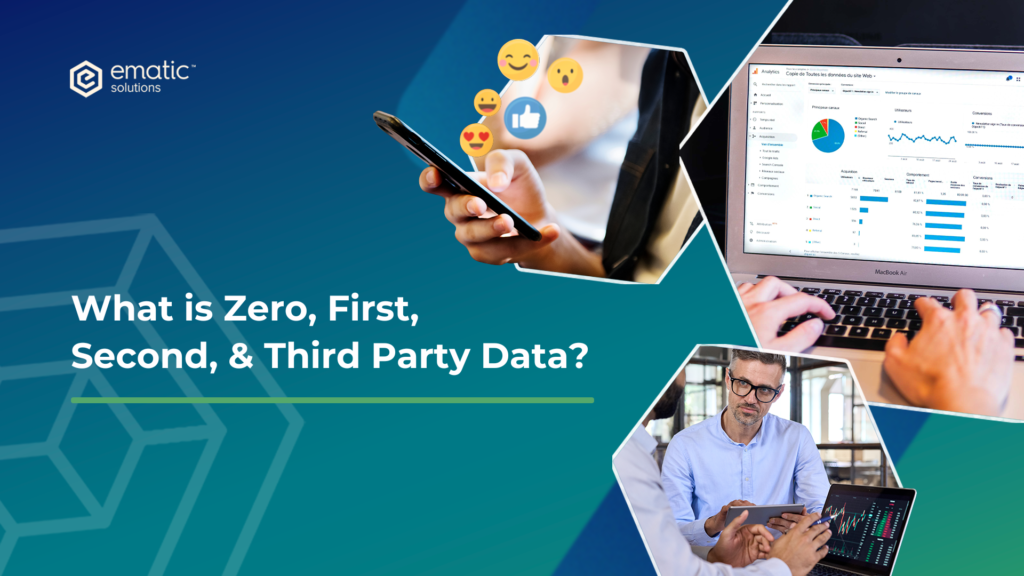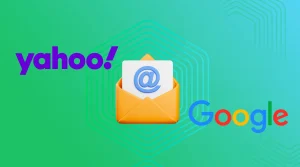What is Zero, First, Second, and Third-Party Data?
One of the more pronounced benefits of going into online marketing is how you can track, analyze, and understand your customers as well as how they respond to your product. All of this information is called “data,” and when you’re deep enough into collecting data while journeying into online marketing, you might have stumbled upon the terms “zero,” “first,” “second,” and “third-party” data. What exactly are they, and why do you need to know the difference?
Zero-party and first-party data are considered the most valuable to have because they are owned by you. Zero-party data is information that was given by your customer directly and with full consent via several mediums and platforms.
To give a better picture, remember when you first signed in to Netflix and they ask you to share some movies that you enjoy and, in return, recommend similar movies to your selection?
That’s a good example of zero-party data and how it’s gathered. It is data given by your customer willingly in exchange for a better personal experience, valuable updates, or, in some cases, discounts in the future.
Of course, zero-party data does not always have to be gathered from a website or app; you can also collect it from:
- Survey and signup forms
- Email/newsletter
- Chatbot
- Social media (Instagram, Facebook, LinkedIn

Examples of zero-party data:
- Customers’ demographic, such as age, gender, family status
- Product or service preferences, such as what qualitative criteria they are looking for in the product
- Feedback and reviews
- Customer’s personal interests, such as hobbies or preferred music genres
First-party data, on the other hand, is quite similar but with a distinct difference. The data collected is still given with consent, but it is collected through interactions such as website visits, purchases, or registering for services. This means that you are not asking them directly for information but rather collecting it automatically when they interact with any specific actions on your platform.
Both zero- and first-party data are information pieces gathered by a company from its own sources. This includes the company’s own website, app, CRM, and social media. What type of information do we usually see when it comes to first-party data?
Examples of first-party data:
- Customer’s demography, such as location
- Purchase history, such as product purchased, purchase frequency, purchase amount
- Website visits and interactions, such as page views, time spent on the website, and user behavior on the website
- Customer contact information, such as email addresses, phone numbers, and physical addresses
One thing to always remember is to always be transparent with your audience on what the data they are providing will be used for, and of course to use them as stated.
Benefits of using zero and first-party data
Because both of these types of data are essential information received directly from your customers, it is valued as being highly accurate and can be used to optimize your offerings and promotional campaigns. Here are some ways zero and first-party data are effectively being utilized:
Personalization: Zero and first-party data can be used to personalize an individual’s experience. Information such as preferences, habits, and interests voluntarily shared by the individual can be used to make recommendations and tailor content to their specific needs and interests.
Segmentation: The varying information collected can be used to segment customers into different groups, allowing marketers to tailor their messaging and offerings to specific segments, leading to more effective marketing campaigns.
Improved privacy: As the data is voluntarily provided by individuals, it is collected with their consent and knowledge. This can help build trust with customers and improve privacy by avoiding the collection of sensitive information without their consent. This also aligns with the GDPR and the CCPA’s outlook on data collection.
Better customer understanding: By collecting zero and first-party data, marketers can gain a deeper understanding of their customers, including their motivations, preferences, and pain points. This can help inform product development, marketing strategies, and overall customer engagement.
Precise retargeting and higher ROI: Leveraging first and zero-party data to create your marketing strategy is definitely THE trend in 2023, as the industry prepares for the cookieless world and sees better results to match customers’ demands. If you’re looking into better utilization of said data, do get in touch with us!
Second-party data is essentially another company’s first-party data. Companies and brands often form alliances, which means they share their customers’ data with one another.
This means the types of information you collect as second-party data are usually the same as first-party data, such as demographics, interests, purchase history, etc.
Benefits of using second-party data
Having second-party data is highly valuable, particularly when your partner is offering a product or service that complements yours or vice versa. For example, when Nike partners up with Apple to promote an active lifestyle, or when Starbucks and Spotify work together because a big part of the coffee shop ambiance is the music.
It also enables you to develop exciting and creative campaigns and opens up new opportunities to widen your current audience and customer base. Here are more benefits of using second-party data:
Increase reach: Second-party data can help you reach new audiences that you may not have been able to access otherwise. For example, if you’re a B2B company, partnering with another business that serves a similar target audience can help you expand your reach.
Save cost: Acquiring second-party data can be more cost-effective than trying to collect the same data yourself. For example, broadening your customer base in a new market can be done “cheaper” when you partner up with a local business, as they can give you access to valuable customer data without you having to invest in expensive market research.
Enhance customer insights: By accessing data from another organization, marketers can gain new and more comprehensive insights into their customers, allowing them to make more informed decisions.
Better Targeting: Second-party data can provide more accurate and relevant information for targeting and personalization, leading to improved marketing results.
Third-party data is data that is collected by a company or organization that is not directly related to your business or brand.
This type of data is the farthest from the consensual information we could get from our customers (or would-be customers), and it’s typically collected by third-party providers who gather data from a variety of sources, such as cookies, social media platforms, and public records, and then sell it to businesses for marketing and advertising purposes.
Some examples of third-party data
- Demographic data, such as age, income, and education level, is collected by market research firms.
- Location data, such as GPS coordinates and real-time data, is collected by mobile device apps.
- Behavioral data, such as web browsing history and purchase history, is collected by online tracking tools and advertising networks.
- Social media platforms collect information such as posts, likes, and followers.
Companies can buy these profiles from other companies or advertisement networks and use them as a base to develop ads aiming to be relevant to any set of customers browsing online.
For example, a car company buys a profile with interests in automotive, cars, racing, and driving. Once bought, they use this profile to set up a promotional campaign and ads targeting this particular set of users.
On the surface, this might be a good strategy for reaching a wider audience. However, because the data is collected from various sources and therefore too generalized, there is a lesser chance of getting good results.
Moreover, because customers are usually kept in the dark, ads displayed based on third-party data can be seen as intrusive.
The pros and cons of using third-party data
There’s no doubt that by utilizing third-party data, you will be able to target would-be customers that may not even have heard of you. This can widen your brand awareness and help pull in customers who are not already in your current database.
However, because users are not aware of how their data is being used, there can be a high level of distrust accumulating among these would-be customers, which will then turn into a negative outlook on your overall brand.
A shift away from third-party data
The shift in today’s privacy policy has greatly affected the use of third-party data, which has resulted in a mass phase-out of the practice within internet browsers made by companies including Google (Chrome), Mozilla (Firefox), and Apple (Safari).
A Google blog post stated in February 2021 that “users are demanding greater privacy, including transparency, choice, and control over how their data is used, and it’s clear the web ecosystem needs to evolve to meet these increasing demands.”
Moreover, not only is third-party data no longer being collected through our browsers, but the interest in using it by marketers nowadays has also been phasing out. The mass-collected nature of it doesn’t seem to provide high accuracy for companies to use as a base for marketing campaigns and ads, hence the shift in interest.
Building your marketing strategy with zero and first-party data
Collecting data and using it to shape your marketing strategy can take a significant amount of time and effort; however, not with a little assistance. Ematic Solutions has built its CRM expertise for nearly 10 years and is a master at using customer data to develop marketing strategies. We provide support to your existing team in terms of data tracking and analytic deployment, as well as using your data to drive results across various channels, from CRM to performance marketing. Looking for some help? Reach out to us today to talk about marketing strategies!








